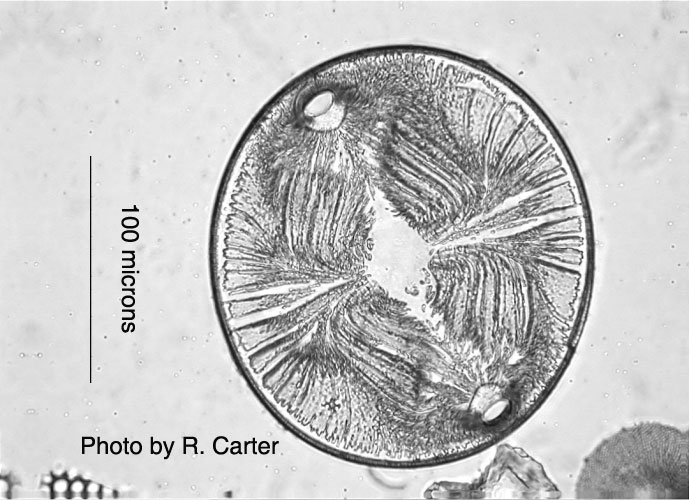
|
Oamaru Diatoms
by David B.
Richman,
and Richard
Carter |
Editor's Note: Web version
below.
Also available
as a fully
illustrated
Acrobat
format pdf document (2.0 Mbytes) prepared from
the authors'
orginal Word document and which is more suitable for printing.
The senior author became interested in the diatoms of the Oamaru diatomite deposits when Robert McLaughlin gave him several slides of identified species mounted by R. I. Firth in the 1970s. Both of us have since augmented this group of slides by strews, mounted by Klaus Kemp, from seven localities in the Oamaru beds, and with a few antique slides, including some mounted by W. A. Firth. It is from the collections so derived that we base this article on this famous (among diatomists at least) site.
Oamaru, on the east coast of the South Island of New Zealand, is indeed a famous site for Late Eocene – Early Oligocene diatomite. Its existence and some of the flora present were first described by de Lautour (1888). Not only are diatoms numerous in the various scattered deposits, but the diversity is very large – at least 666 species in 114 genera (Desikachary and Sreelatha 1989). The pennate forms were earlier described by Schrader (1969). Their age is Runangan to early Whaingaroan (Edwards 1991), thus fitting neatly into the Late Eocene-Early Oligocene at about 32-35 or so million years ago. The climate during this period was much warmer than now and tropical seas dominated the planet, tropical forest was common on land, and temperate forests reached all the way to near the North and South Poles. The climate gradient world wide was much more uniform than today, but the planet started cooling slowly near the poles as the Oligocene dawned, leading up to the eventual glaciations of the Pleistocene (Scotese 2003).
During the early Tertiary the diatom flora speciated wildly, resulting in the fantastic diversity found in the Oamaru diatomite beds. The beds themselves range from 21 to 41 meters in thickness, and are exposed at a number of sites sandwiched between igneous and limestone layers on various farms around Oamaru, distributed over an area of about 25 square kilometers. In fact, the volcanism of the region may have further increased speciation by warming the ocean even more, and possibly causing upwelling of nutrient-rich water. The diatomites are believed to have formed in a quiet basin about 50 kilometers offshore that received very little terrestrial sediment, thus allowing the great abundance of microfossils (O’Connor 1999).
The most well known sites are Allan’s Farm, Bain’s Farm, Cormacks (now destroyed), Taylor’s Quarry, Williams Bluff, Division Hill, Forrester’s Hill, Jackson’s Paddock, Flume Gully (Papakaio), and Troublesome Gully. See Dailey (2004) for photos and descriptions of the more well-known sites. Edwards (1991) and O’Connor (1999) provide a summary of the basic information on the sites. The rolling hills of the Oamaru region are not especially remarkable, but the diatomite found there is quite remarkable indeed! However, it should be noted that some of it is being mined and sold as kitty litter.
The variety of forms present in the Oamaru diatomite is astonishing in comparison with most other sites. Some of the diatoms are triangular (often with various ornamentations), others circular, boat-shaped, hexagonal, pentagonal, square, spindle-shaped, shaped like watches or helmets, and some shapes are difficult to describe at all. Genera include Cestodiscus, Melosira, Paralia, Stephanopyxis, Actinocyclus, Brightwellia, Coscinodiscus, Porodiscus, Actinoptychus, Aulacodiscus, Asterolampra, Rutilaria, Arachnoidiscus, Stictodiscus, Chaetoceros, Hemiaulus, Trinacria, Biddulphia, Grovea, Kittonia, Auliscus, Triceratium, Synedra, Cocconeis, Amphora, Mastogloia, Navicula, Nitzschia, Pinnularia, and a number of others, some found nowhere else, and others found in a few late Eocene beds in other parts of the world, while many are widespread even among the currently living diatoms.
Taylor (1929) notes that the genera usually associated only with Oamaru include Anthodiscus, Grovea, Huttonia, Isodiscus, Monopsia and Pseudorutilaria, with some species of Kittonia found only there and others only from Barbados diatomite. Some diatoms point to Oamaru if they are present in large numbers on a slide. Taylor uses Stephanopyxis grunowii Grove & Sturt and Triceratium venulosum Greville as examples. The genera Brightwellia and Porodiscus are known from both Oamaru and from Barbados, and from a few other sites. Rattrayella is found both at Oamaru and from middle Russian diatomite. The reasons for these widely dispersed Eocene-Oligocene deposits are unknown, but the warm interconnected seas of the period probably had a role in the dispersal of diatoms over much of the planet. Modern sea depths probably cover much of the deposits in between, causing the seeming break in distribution.
The following album is a sampling of the huge variety of diatoms found in the Oamaru beds. It is by no means exhaustive of the forms, but will give the reader some idea of the complexity of the diatom flora of these deposits. Those who wish to explore the flora further can find antique slides on the Internet or get strews from Klaus Kemp (http://www.diatoms.co.uk/kdk.htm).
For those who would like to look at the sites from satellite photographs, Richard found them easily using Google Earth at http://earth.google.com/ .
For those interested in details of the equipment used in making these images,
David Richman made his photos with a Parco/Meiji trinocular microscope at 100-400X with a Nikon Coolpix 995 digital camera. Almost all were made under ordinary brightfield illumination, but one phase contrast photo is included for comparison. Richard Carter made his photos with a Motic BA-450 phase contrast trinocular microscope at 100-400X and a Nikon Coolpix 990 digital camera with MC-EU1 electronic shutter release, augmented by the CombineZ5 image-stacking program for improved depth of focus.
Comments to the author, David Richman , are welcomed.
Literature Cited
Dailey, W. 2004. Oamaru diatomite collection sites. http://www.sas.upenn.edu/~dailey/oamaru/
Desikachary, T. V., and P. M. Sreelatha. 1989. Oamaru diatoms. Bibliotheca Diatomologica, Berlin, Band 19, 330 pp plus 145 plates.
Edwards, A. R. (compiler). 1991. The Oamaru diatomite. New Zealand Geological Survey Paleontological Bulletin 64, 260 pp.
Lautour, H. A. 1889. On the fossil marine diatomaceous deposit near Oamaru. Transactions of the New Zealand Institute 21:293-311.
O'Connor, B. 1999 Radiolaria from the Late Eocene Oamaru Diatomite, South Island, New Zealand, Micropaleontology 45:1-55.
Schrader, H. J. 1969. Die pennaten diatomeen aus dem obereozän von Oamaru, Neuseeland. Beihefte zur Nova Hedwigia, heft 28, 124 p., plus 39 plates.
Scotese, C. R. 2003. Paleomap Project. Climate History. http://www.scotese.com/climate.htm
Taylor, F. B. 1929. Notes on diatoms. Bournemouth (published privately), 269 pp., plus five plates.
Diatom photomicrographs

Auliscus oamaruensis Grove and Sturt. Forresters, Oamaru. Ex strew mounted by Klaus Kemp, November 2006.
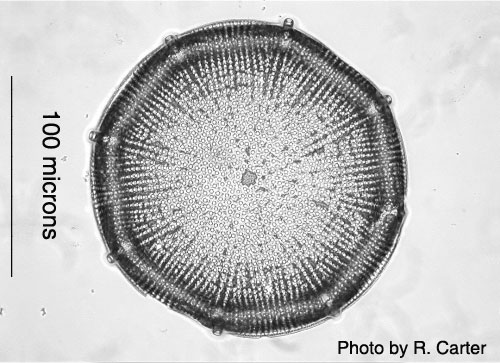
Aulacodiscus amoenus Greville. Forresters, Oamaru. Mounted by Raymond Hummelink, August 2006.
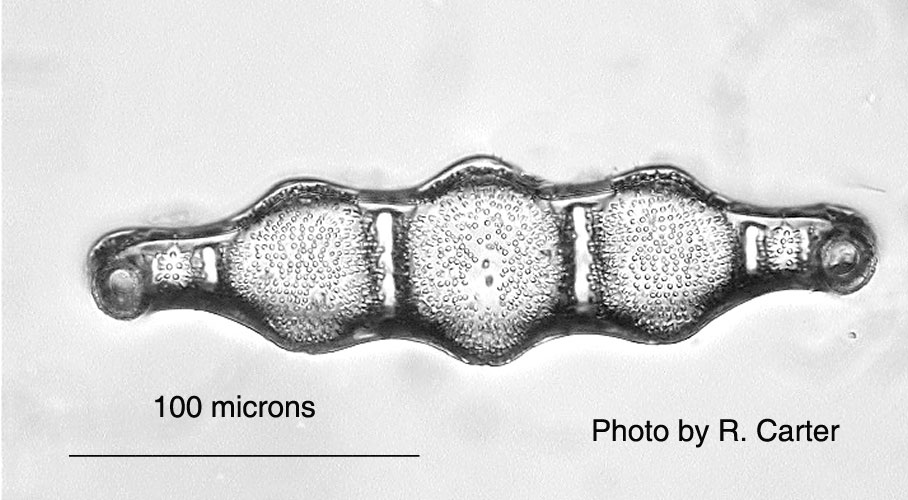
Biddulphia rigida Schmidt. Allans Farm, Oamaru. Mounted by A. W. Round, July 1963. Ex collection of F. C. Wise.
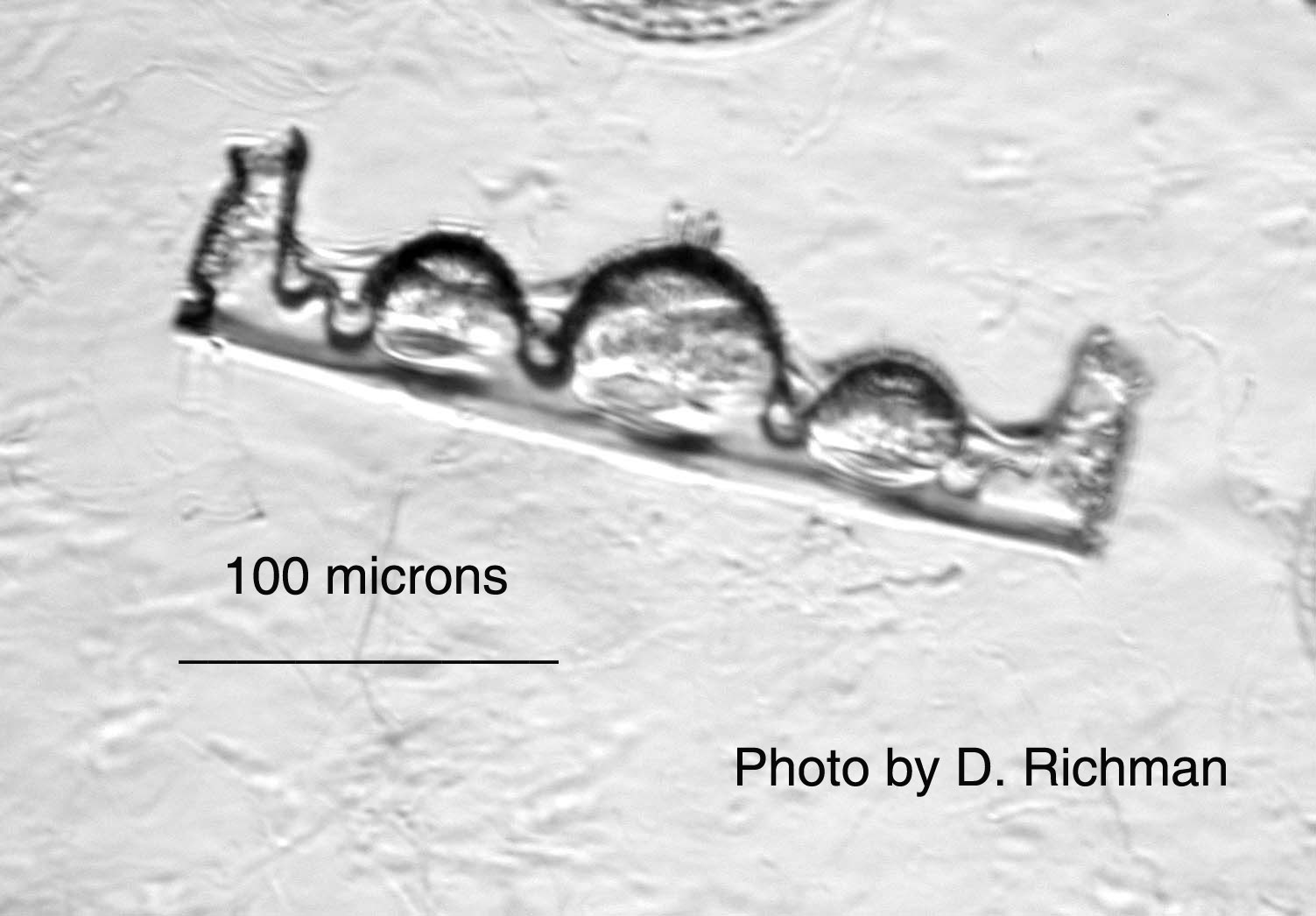
Biddulphia capusina Schmidt. Cormacks, Oamaru. Mounted by W. A. Firth, probably around 1920.
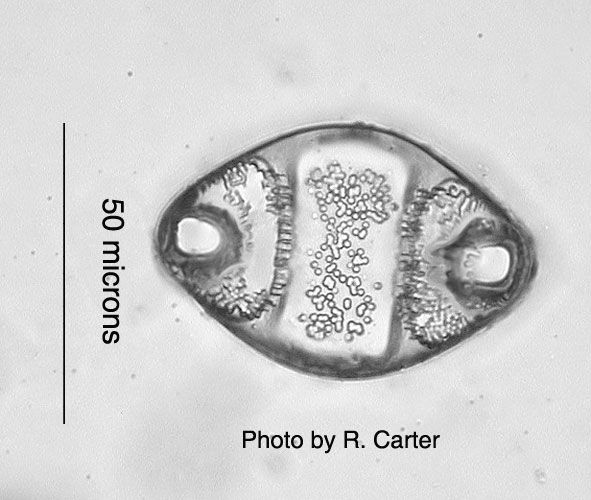
Biddulphia sturtii Wise. Forresters, Oamaru. Ex strew mounted by Klaus Kemp, November 2006.
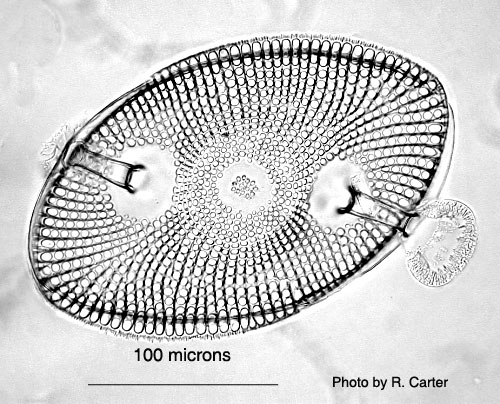
Kittonia elaborata Grove and Sturt. No locality but “Oamaru”. Mounted by H. B. P., December 1887.
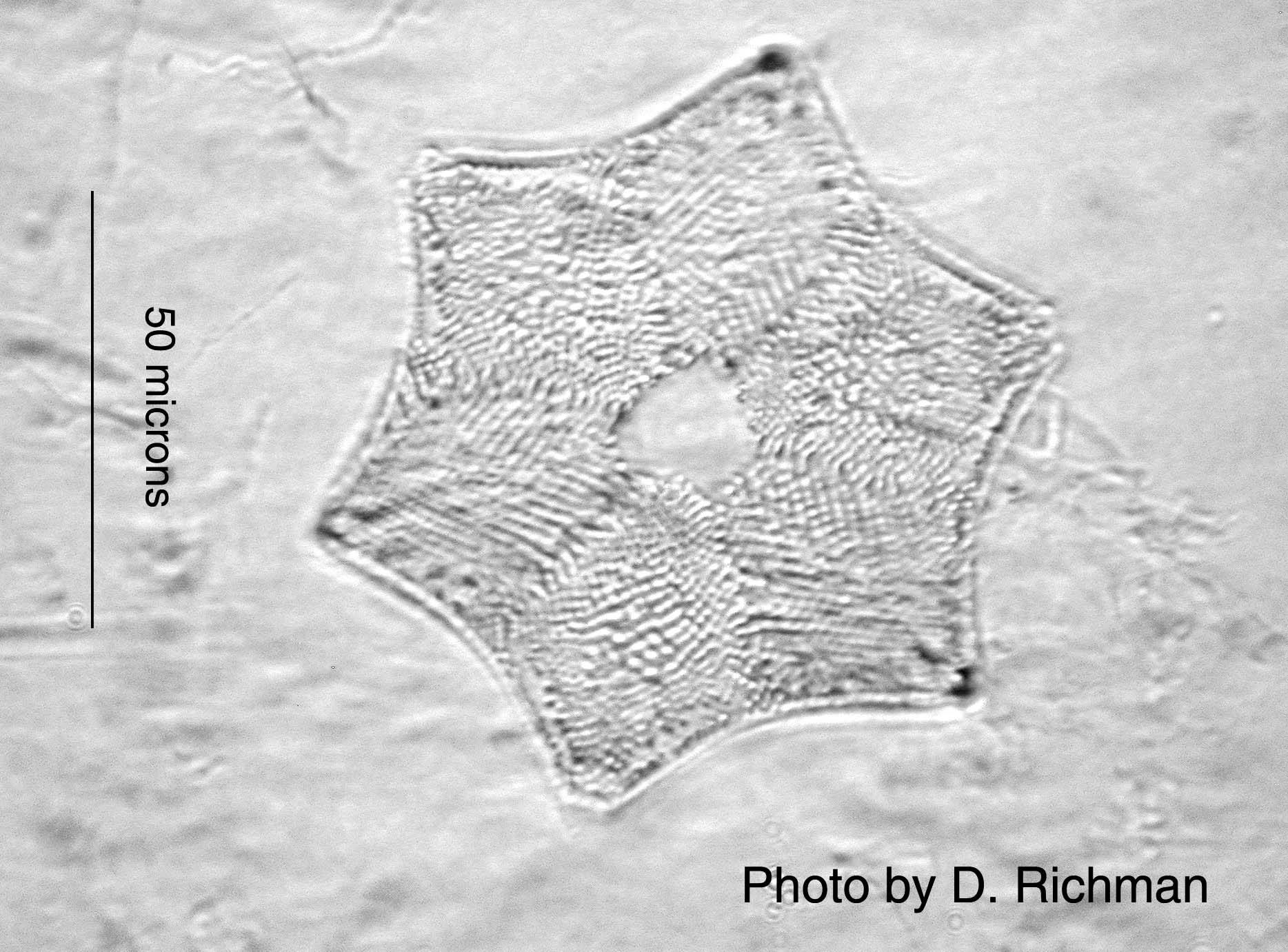
Actinoptychus decorans Schmidt. Cormacks, Oamaru. Mounted by W. A. Firth, probably around 1920.
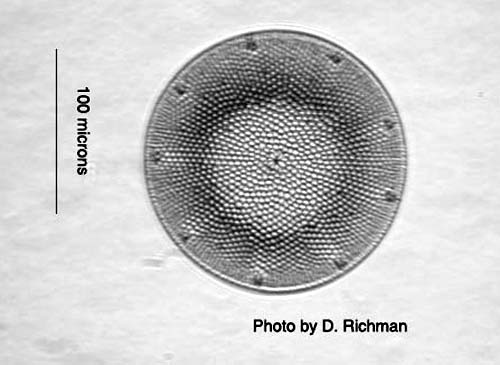
Aulacodiscus cellulosus var. plana Grove & Sturt. Cormacks, Oamaru Mounted by W. A. Firth, probably about 1920.
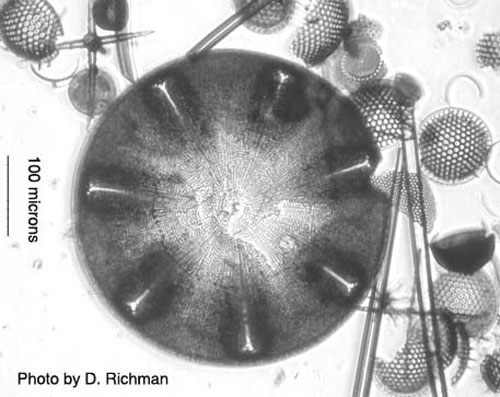
Aulacodiscus janischii Gr. & St. Bains Lower, Oamaru. Ex. Strew mounted by Klaus Kemp 2007.
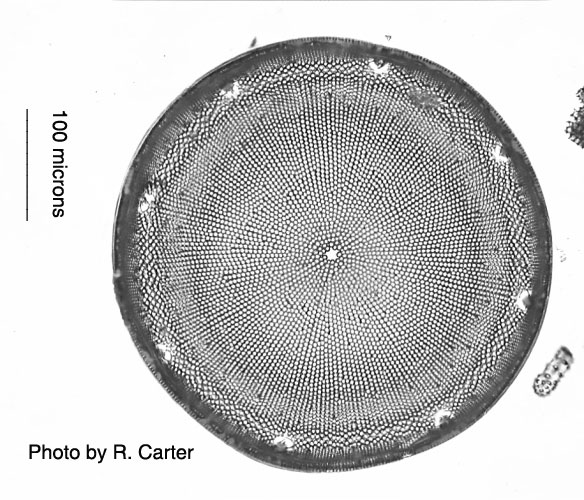
Aulacodiscus margaritaceus var. undosa Grove and Sturt in Rattray. Allans Farm, Ex strew mounted by Klaus Kemp, November, 2006.
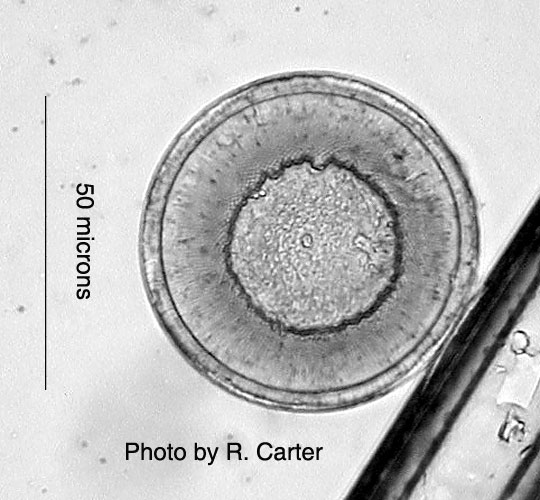
Hyalodiscus radiatus (O’Meara) Grunow. Forresters, Oamaru. Ex strew mounted by Klaus Kemp, November 2006.
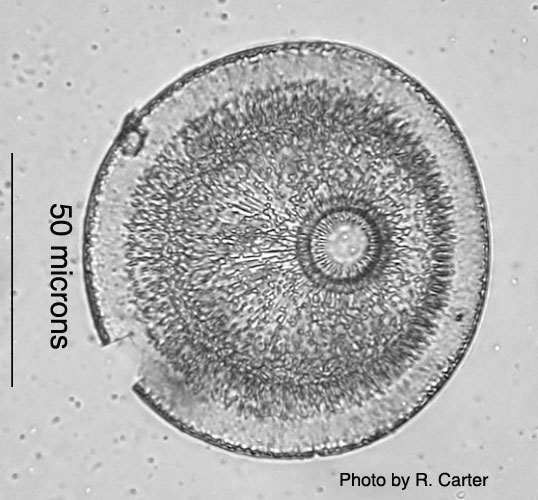
Monopsia mammosa Grove and Sturt. Forresters, Oamaru. Ex strew mounted by Klaus Kemp, November 2006.
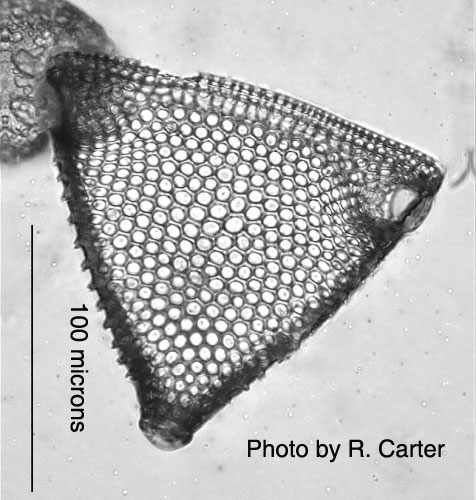
Triceratium grunowii Jan. in Schmidt. Forresters, Oamaru. Ex strew mounted by Klaus Kemp, November 2006.
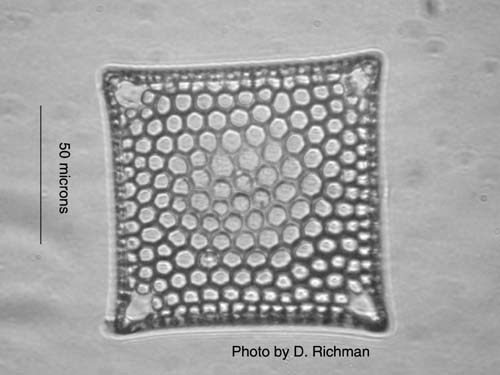
Triceratium favus var. quadrata Grunow. Oamaru (no exact locality). Mounted by W. A. Firth, probably about 1920.
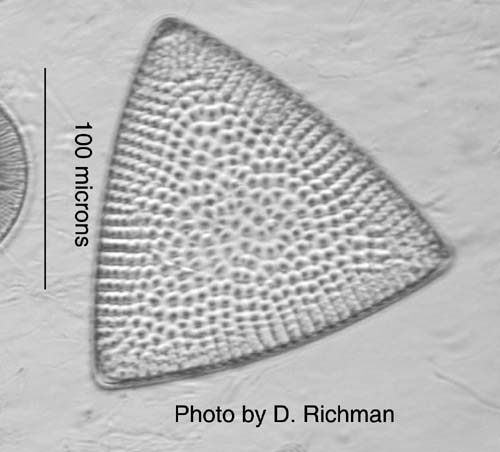
Trigonium americanum (Ralfs) Hustedt. Cormacks, Oamaru. Mounted by W. A. Firth, probably about 1920.
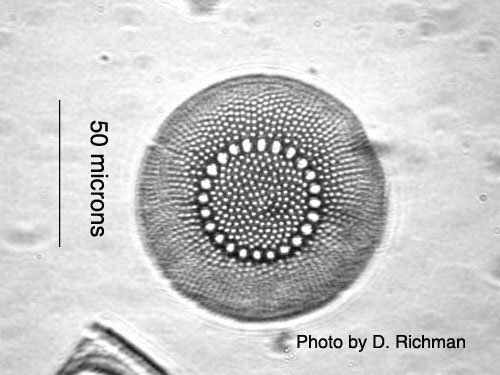
Brightwellia coronata (Brightwell) Ralfs. Bains Lower, Oamaru. Ex. Strew mounted by Klaus Kemp 2007.
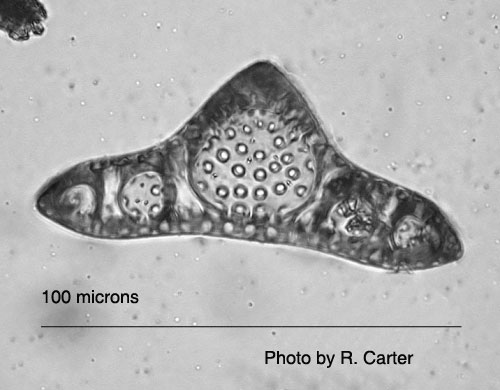
Eunotogramma weissei Ehrenberg. Forresters, Oamaru. Ex strew mounted by Klaus Kemp, 2006.
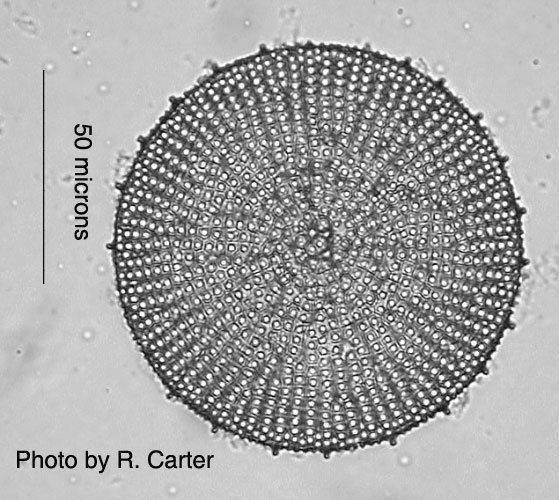
Coscinodiscus spiniferus (Grove and Sturt). Grove and Sturt. Forresters, Oamaru. Ex strew mounted by Klaus Kemp, November 2006.
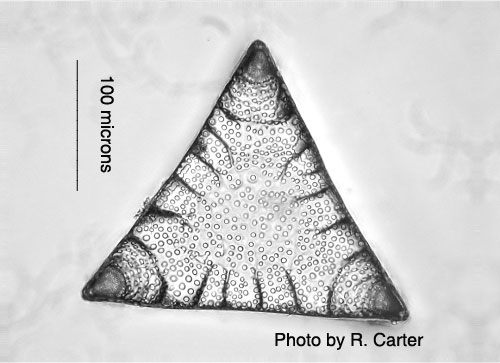
Trigonium dobreeanum var. novazealandiae (Grove and Sturt) Hustedt. Forresters Hill, Oamaru. Mounted by R. Gosden, December 1964. Ex collection of F. C. Wise.
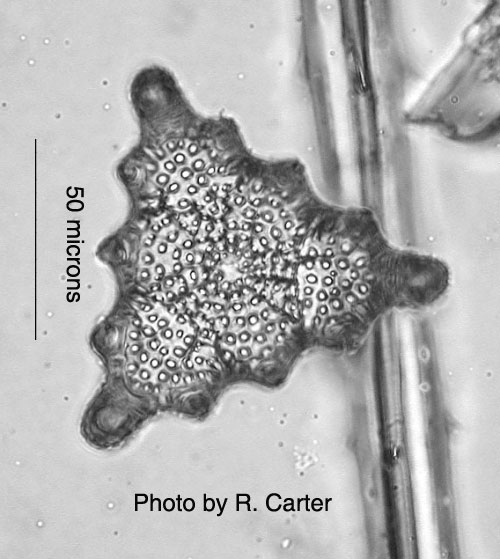
Trigonium crenulatum (Grove and Sturt) Hustedt. Forresters, Oamaru. Ex strew mounted by Klaus Kemp, November 2006.
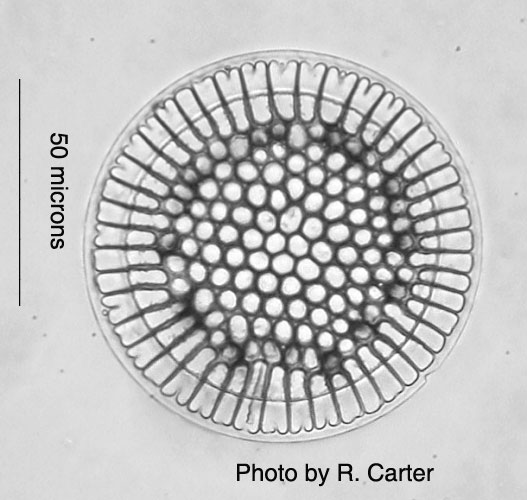
Stephanopyxis monstrosa (Forti) Desikachary and Sreelatha. Forresters, Oamaru. Ex strew mounted by Klaus Kemp, November 2006.
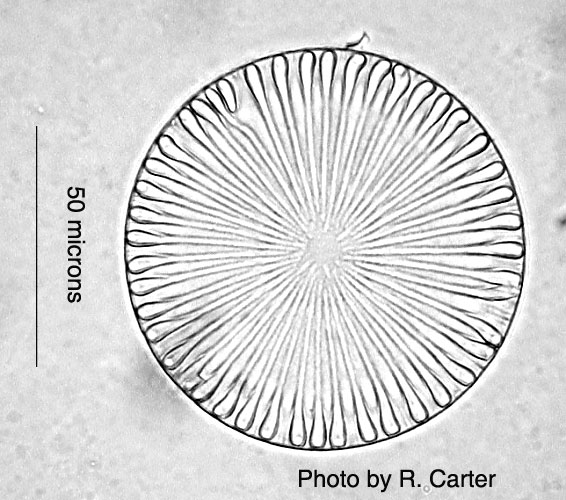
Melosira clavigera Grunow in Van Heurck. Papakaio, Oamaru. Mounted by Dr. Charles L. Odam, November 1945. Ex. collection of F. C. Wise.
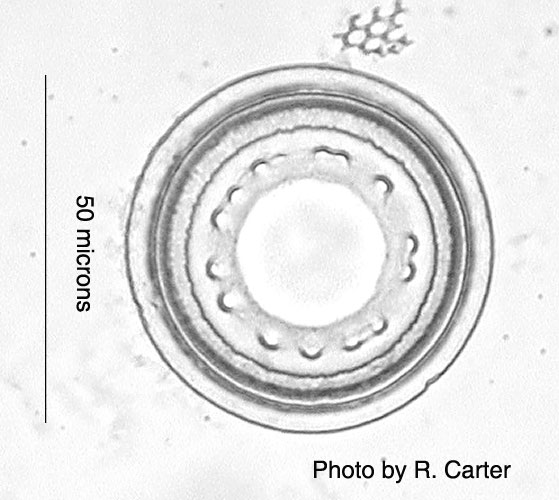
Podosira corolla Schmidt. Forresters, Oamaru. Ex strew mounted by Klaus Kemp, November 2006.
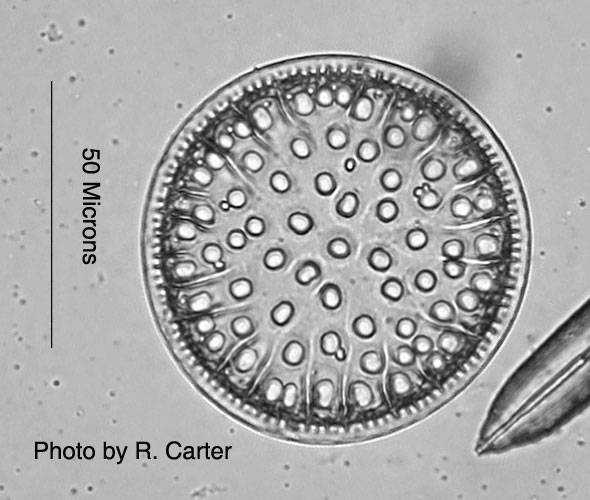
Stictodiscus californicus var. nitida. Grove and Sturt. Forresters, Oamaru. Ex strew mounted by Klaus Kemp, November 2006.
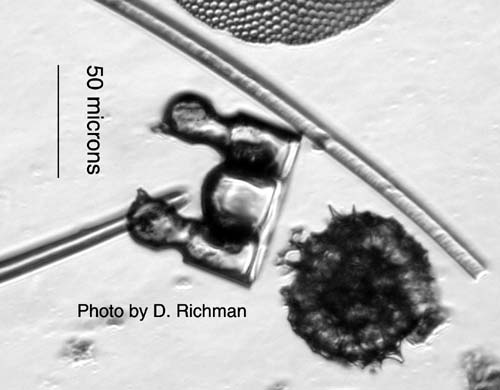
Briggera capitata (Grev.) Ross & Sims. Breen’s Farm, Oamaru. Ex. Strew mounted By Klaus Kemp, February 2005.
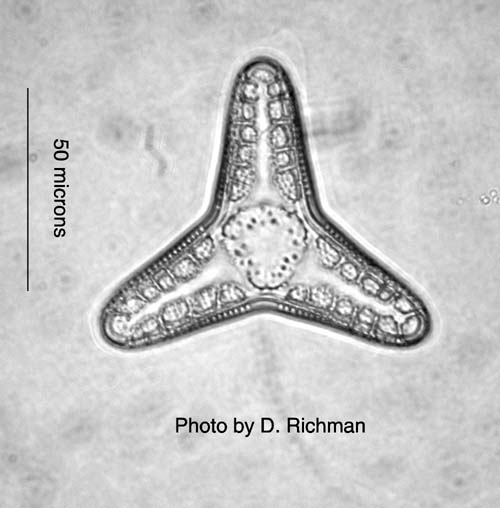
Triceratium nitescens Greville. Forresters Hill, Oamaru. Mounted by R. I. Firth, October 1969.
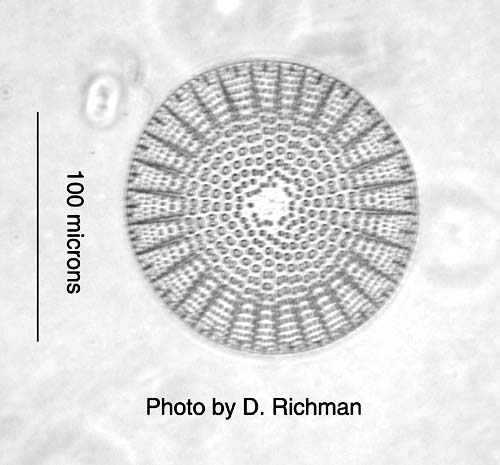
Arachnoidiscus lepidus Brown. Forresters Hill, Oamaru. Mounted by R. I. Firth, May 1969.
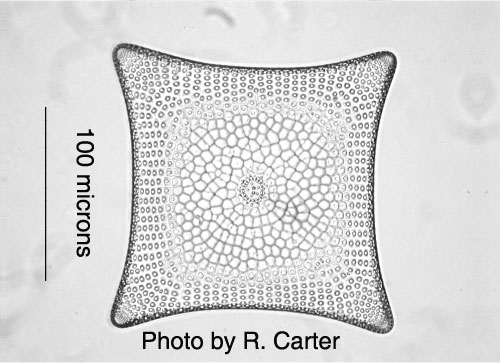
Stictodiscus novaezealandiae Grunow. Division Hill, Oamaru. Mounted by R. Gosden, October 1965. Ex collection of F. C. Wise.
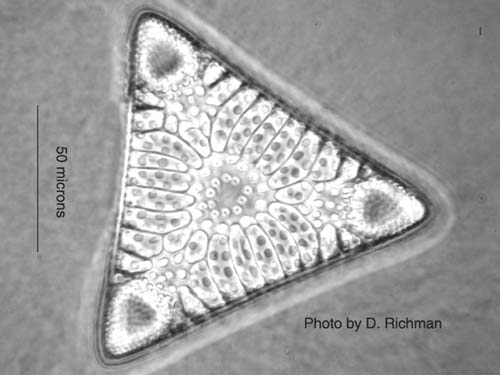
Triceratium morlandii Grove & Sturt. Bain’s Middle, Oamaru. Mounted by R. I. Firth, August 1974. Phase Contrast.
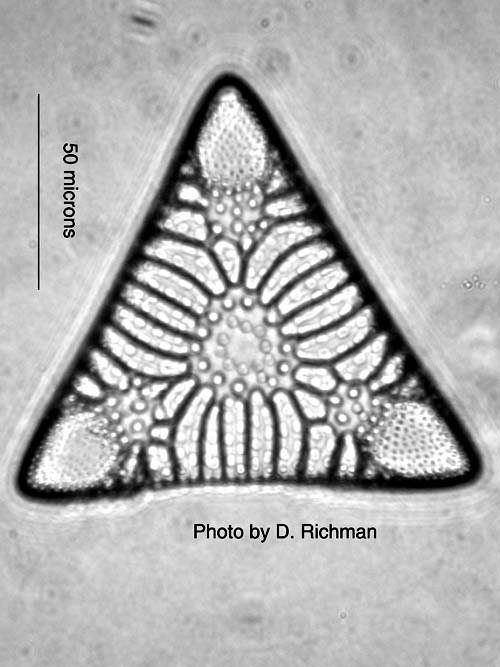
Triceratium morlandii Grove & Sturt. Bain’s Middle, Oamaru. Mounted by R. I. Firth, August 1974. Ordinary brightfield illumination.
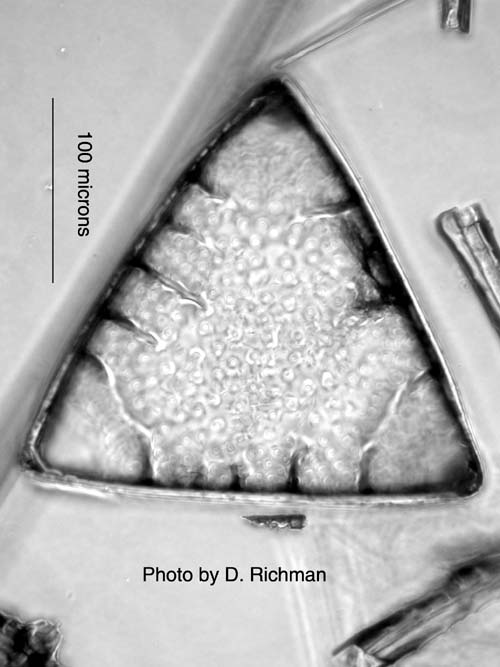
Trigonium tabellarium (Btw.) Mann. Division Hill, Oamaru. Ex. Strew mounted by Klaus Kemp, April 2007.
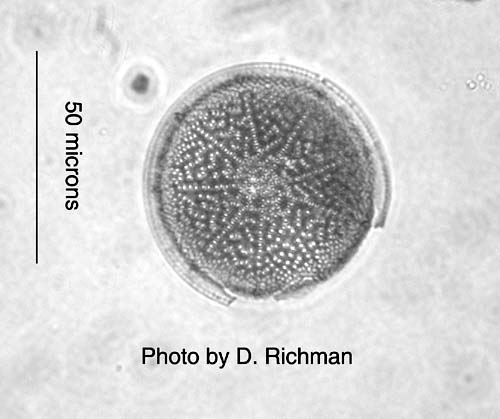
Actinocyclus octonarius var.tenellus (Bréb.) Hendey. Bain’s Upper, Oamaru. Ex. Strew mounted by Klaus Kemp, April 2007.
Microscopy UK Front Page
Micscape Magazine
Article Library
Please report any Web problems or offer general comments to the Micscape Editor.
Micscape is the on-line monthly magazine of the Microscopy UK web site at Microscopy-UK.